
We have selected six non-standard venues for “remote meetings”. Each of them was assessed for the ability to assemble meetings of different formats, ease of connecting the participants and opportunities for interaction.
1. Online bars
This type of site during the period of self-isolation has grown by leaps and bounds. A typical online bar is a beautifully designed page that runs the video conferencing engine. Usually there is a bar and background music and radio. A selection of such establishments can be found at onlinebar.pro. For example, StayTheFuckHomeBar. Up to 50 people gather here, the video conference is deployed on the Whereby service. Meeting attendees share the screen, share Trello entries and documents. Emotions are expressed in chat through emoticons.

Stay the f ** k home bar is the legendary 24/7 online bar that pioneered the StayReal.online live content project
The advantages of such sites are a slightly more relaxed atmosphere than an ordinary videoconferencing system. For informal meetings, internal working discussions, small meetings in your circle - they are quite suitable. To participate, just follow the link through a browser - nothing complicated.
2. SpatialChat
When at least 10 people participate in the video chat, simultaneous communication is impossible: everything will merge into a cacophony of gurgling sounds. Usually everyone sits in silence, and one or two people talk. It does not at all look like a real get-together, where people disperse in small groups and discuss something behind the scenes. Can this be done online? The solution to this problem was found on the SpatialChat site.
This platform was developed by the guys at FunCorpLab in 2019 as a simple experiment: how to transfer the spirit of the party to the network. Then she gathered dust in the repository before isolation began. Then the developers wondered how they could communicate with each other - and remembered about SpatialChat. In April 2020, the idea was "uncovered", shown at Product Hunt - and the platform took off: now it is used by up to 150 thousand people monthly.

Some are watching a video, others have turned the bathroom into a meeting
room. The main feature of SpatialChat is the ability to change the position of your video avatar circle on the common field. The closer your circle is to another person or video, the better you hear it. Such a simple mechanic allows you to "group together" by interests within the framework of one event, change your social circle and personally "mute" unwanted interlocutors.
Videos, pictures, music are played on the platform. There is a text chat, but in a truncated form: messages appear for a couple of seconds and disappear - everything is like in a real conversation. How many people can SpatialChat hold? The developers say 10,000, while the largest event has attracted 600 people.
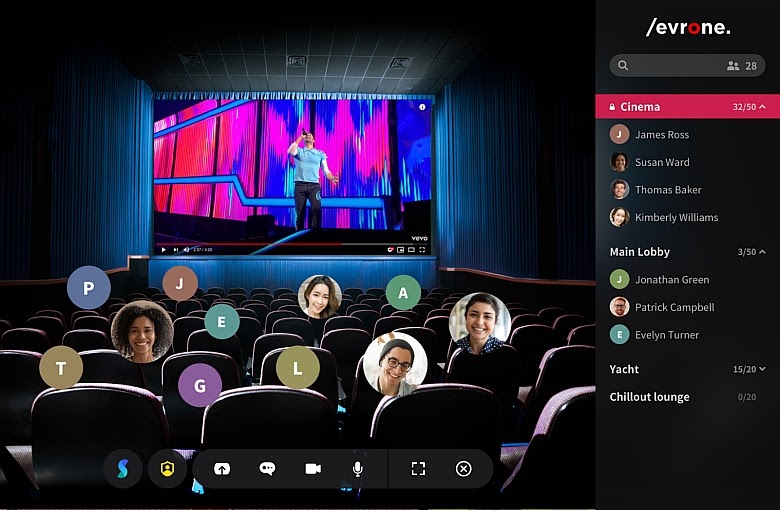
Joint viewing of an online broadcast can be arranged as a virtual concert hall
This site is good for organizing online meetings where networking is important. It is good to run forums with several simultaneous sessions and workshops where students work in groups.
Most of all, SpatialChat was liked by the Japanese, who are just a fan of all kinds of Zoom parties.
Usually they divide the space into several zones: the main social circle, the circle of relatives, the toilet, the smoking room - and, by moving themselves, they show that they were distracted by relatives or they just walked away for a while.
The Google Chrome browser is enough to connect to the conference. Of the minuses: to demonstrate presentations or files, you will have to share your screen, since it is impossible to upload a presentation to the site.
3. Mootup
What if we supplement conventional video conferencing with elements of virtual space? So the developers of Mootup decided and created virtual 3D rooms for video conferencing in Zoom, Teams, Slack, Bluejeans and Webex. Moreover, you can connect either via a PC or mobile phone, or using a VR headset.
There are several types of virtual rooms: office, coworking space, classroom, conference room, meeting room and exhibition. Before entering a room, you create your own personal avatar, much like in The Sims.
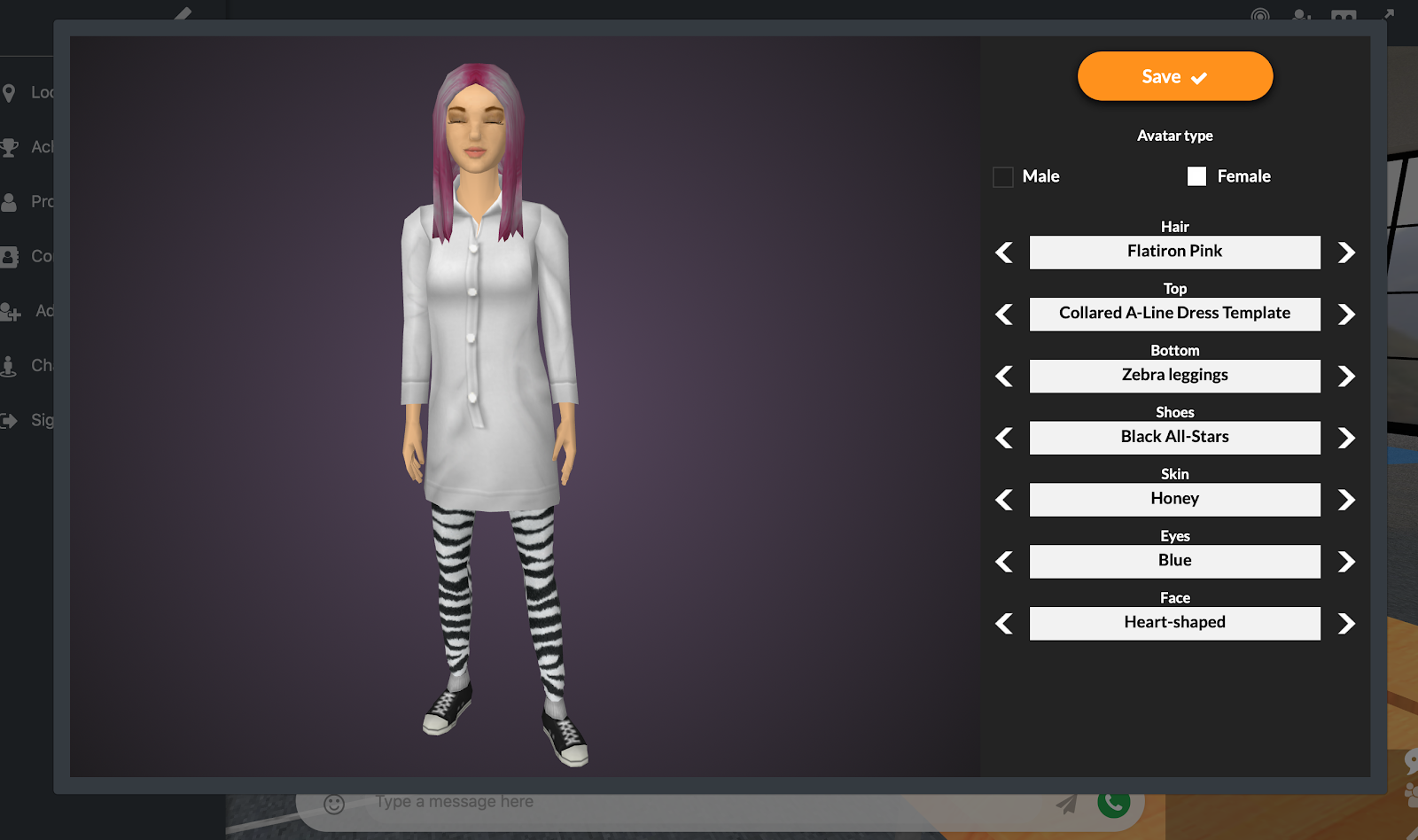
Each participant can customize their avatar: choose gender, hair color and length, clothes, appearance
In the room, you can look around and move through the blue circles. There are nine different movements available to avatars: raise your hand, clap your hands, shrug, etc.

By clicking on another user, you can add their details to your contacts.
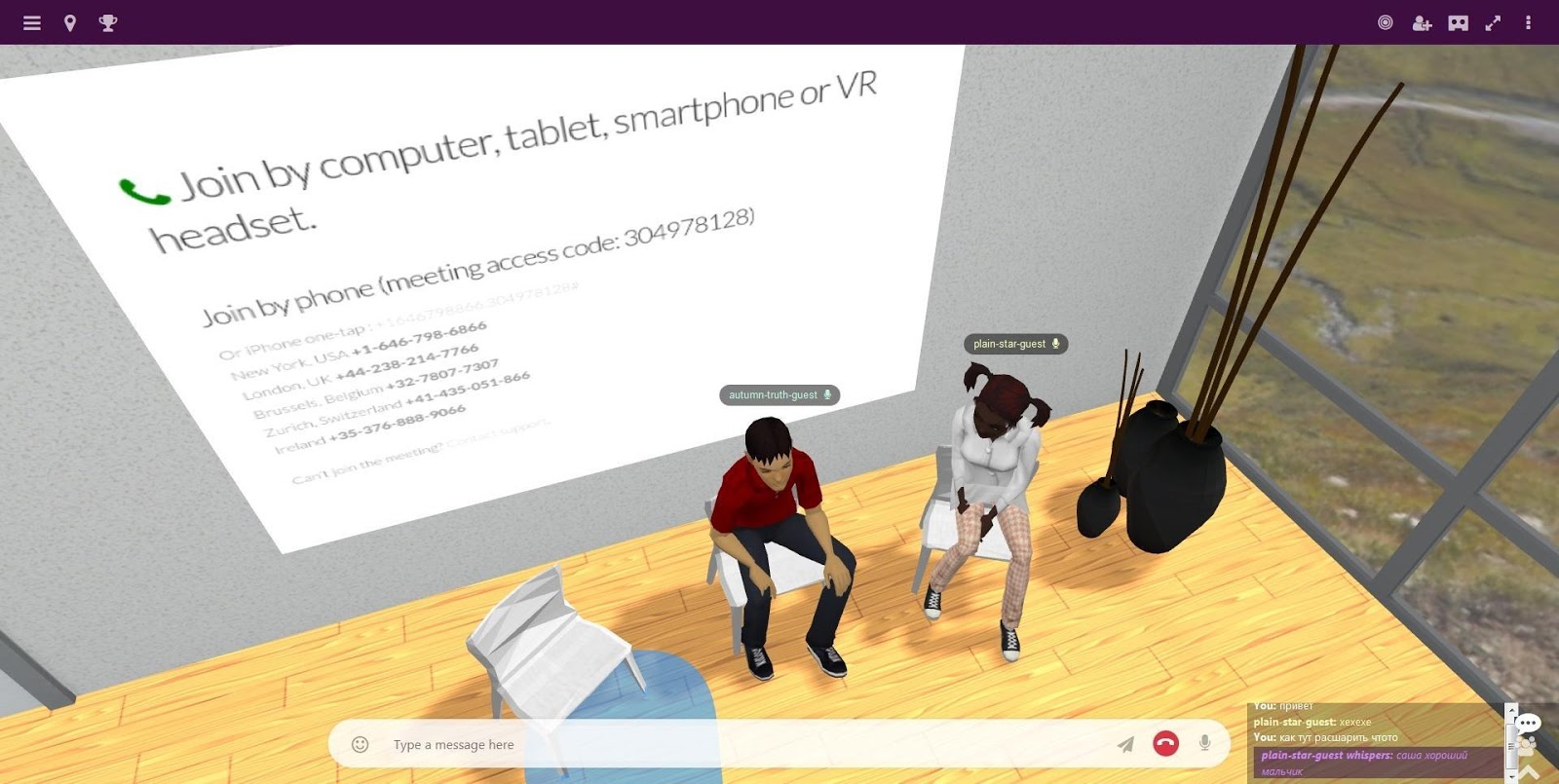
During a video conference, participants share their screen on displays inside the room. Voice chat, text chat and private text chat are available
Free access is limited by the number of participants - up to 5, and session time - up to 40 minutes. Paid access allows you to create your own design of rooms and place in them 3D objects from a library of samples.
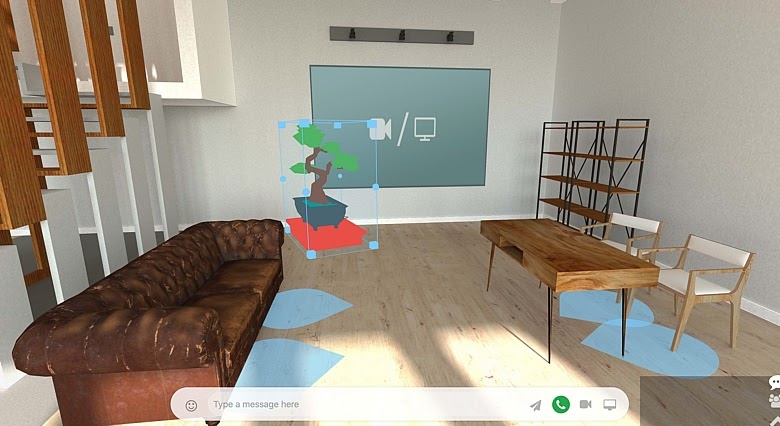
You can display video from your own webcam on the screen. And why not add a bonsai next to the screen?
Advantages of the site: 3D space customized for the type of event, integration with several videoconferencing platforms. Meetings of various formats and scales are held here, although the problem “someone has a microphone turned on” remains.
Moving around the pre-arranged zones looks rather primitive, but the hardware requirements are low: everything works through a browser.
4. AltSpace VR
In general, there is something in the subject of virtual worlds. And the next interesting place is AltSpace VR. It is tailored for use with VR headsets, but also supports 2D mode for PC users. To run the platform, you will have to install a thick (500 MB) client via Steam.

The demo environment allows you to get acquainted with the basic set of features
Inside, a little cartoonish virtual world awaits, in which users look like funny little people. Visitors organize events in ready-made locations or build their own world. For the entertainment of participants, you can add simple games: darts, balls. Participants display their web pages and presentations on Slides.com on a large screen in the room. And yes, the sound volume here, as in SpatialChat, depends on the distance to the sound source.
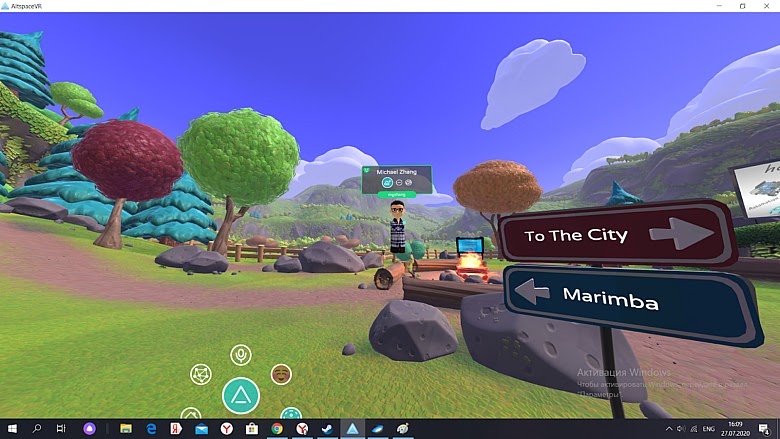
The setting can be not only office
An interesting feature of the site is the ability to photograph everything around and even take selfies. For private parties, this may be required. Pros of the site: a well-designed world with some interactive objects, different spaces for different types of events. The main disadvantages: the need to load a thick client and the general frivolity of the situation.
5. Virbela
This platform offers a virtual environment tailored not only for events, but also for full-fledged office work. The design is more rigorous, but there are pleasant bonuses in the form of the opportunity to play ball (there is even a large football field) or ride a boat with friends.
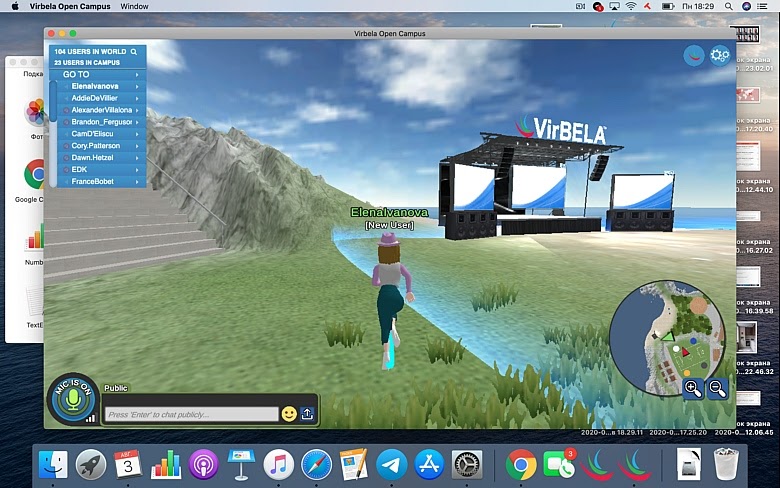
Conferences can be held on the seashore.
But the main thing here is the audience for seminars and large events. They are comfortable and functional. Visitors can sit on any free chair and zoom in on any screen, or simply twist their heads around and talk to neighbors. And yes, you have the ability to hush up a particularly talkative neighbor.
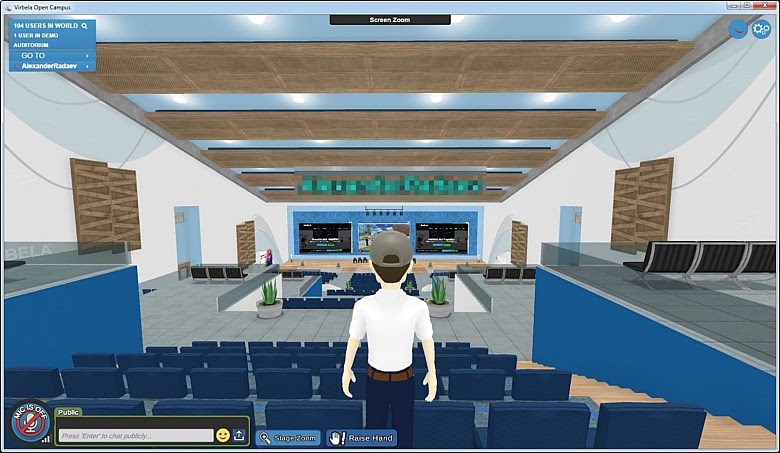
Participants display their presentations and other information on the screens
Events are comfortable for organizers: presentations and videos can be uploaded in advance, billboards can be hung on the walls. Guests can be seated in private areas, so that neighboring groups will not hear each other. All this expands the range of possible event formats.
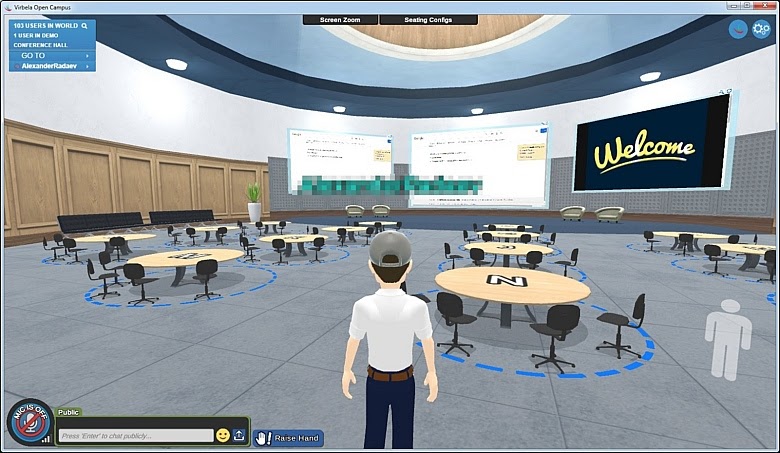
Spaces for individual work groups
There is even such a format of space as a virtual office of the company: with offices, workstations, meeting rooms and a conference hall. If you only need a browser to work, you can work directly from the Virbela world.
Avatars in this VR world are humanoid, with the ability to fine-tune. The avatar has seven predefined movements that express emotions, from shrugs to victory dance.
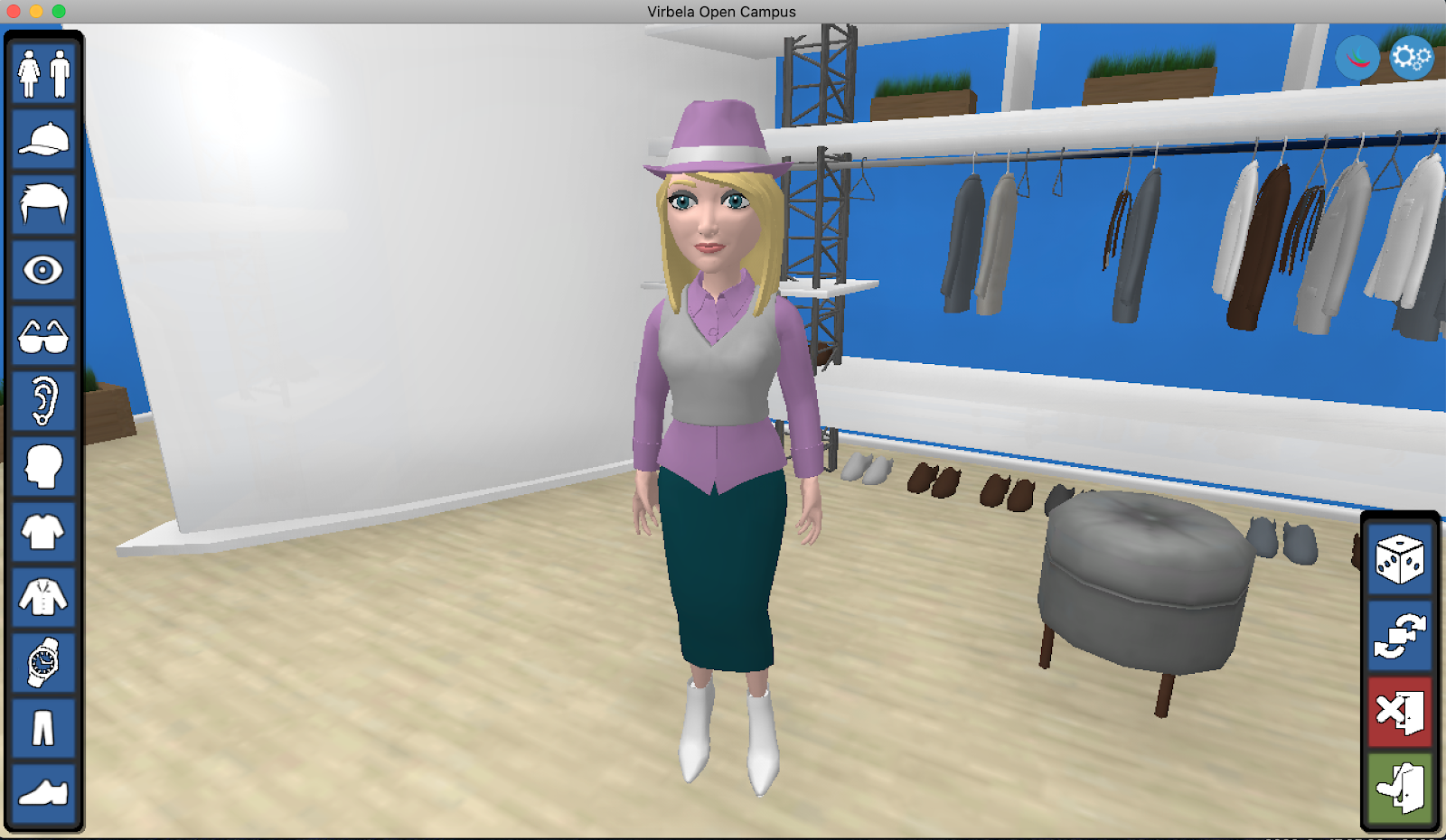
In Virbela, you can also create a personal avatar - choose a costume, hairstyle, shoes and even a clock.
Virbela is suitable for organizing an entertaining party on the beach and for holding a forum for a thousand people, for everything there are chips. The main disadvantage of the platform is the need to download a 500-1000 MB thick client.
6. Minecraft
But what if the event is held not in some special space, but right in a popular game? Recently, HSE (Higher School of Economics) hosted a conference on games in MineCraft on a virtual copy of its campus, and the Bolshoi Drama Theater. G.A. Tovstonogov staged the first performance in this universe.
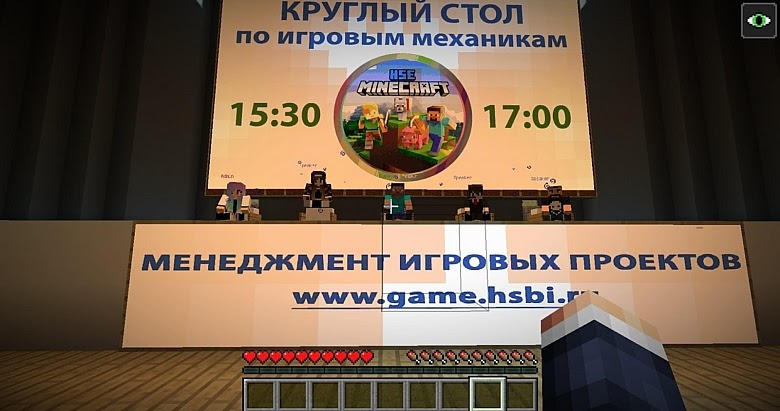
Presidium at one of the sessions
Here we are not talking about some international publicly available minecraft sandbox services - for each event, the organizers deployed a modified version of the game on their own servers. Inside the play area, they rebuilt parts of the buildings and added their own game mechanics as well as programmable shows.
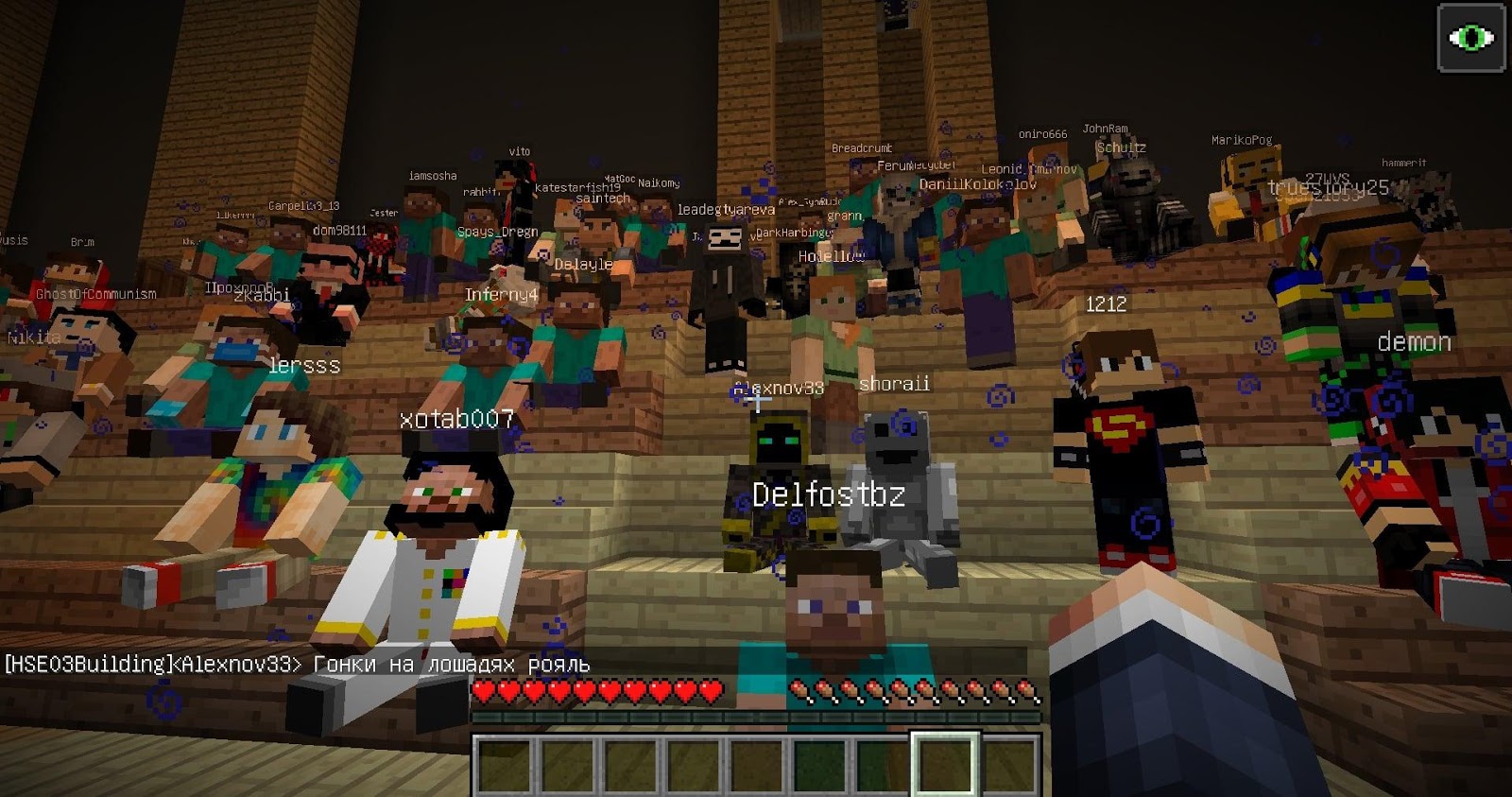
The hall is almost packed (the platform itself imposed the restriction)
The MineCraft engine allows you to implement the most daring ideas, but at the same time, such a project is labor intensive. Only inveterate activists will be able to deploy their game server purely for online parties or work meetings.
We'll have to sweat over the organization of broadcasts within the game. HSE, for example, used Discord for this. Interestingly, events are beginning to be held in other game universes. So, recently the American rapper Travis Scott gave a musical concert in the game Fortnite. If things go on like this, look forward to big conventions in Fallout 76 and campfire parties on the Cordon at Stalker. Guitar included.
Summary table of online sites
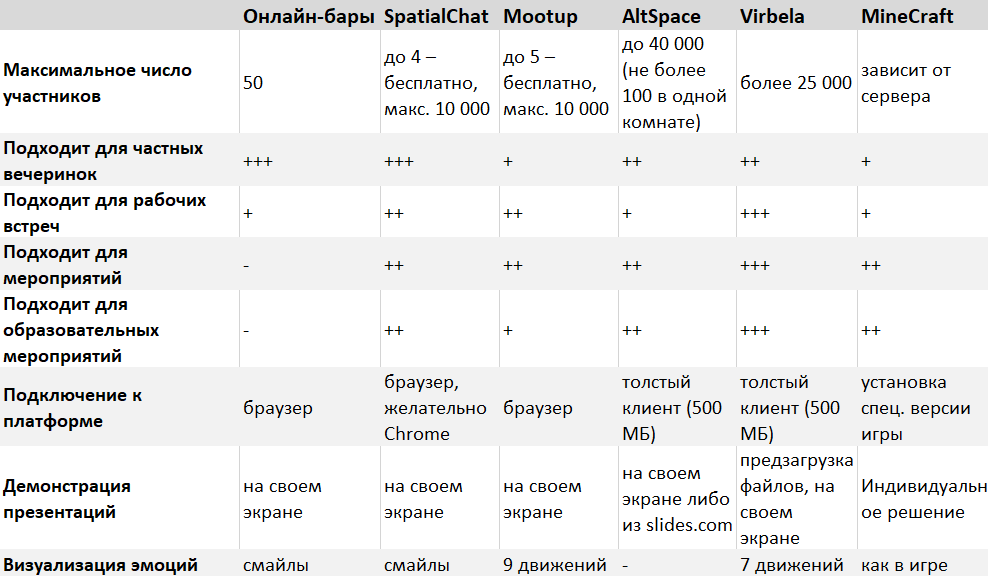
What's next?
The search for unusual ways of online communication prompted the idea that people in online communication want to remain human: to show emotions, choose a circle of communication, show their status and their individuality. Virtual worlds can give some of this already now, and very soon everyone will be able to.
Of course, this is not a complete list of platforms. We took only those that seemed interesting or unusual to us. Therefore, for example, we missed the same Mozilla hubs . What interesting platforms and places for online communication have you come across? Share in the comments, we will definitely look at them and test the most unusual and useful ones for event organizers.
You may also be interested in :